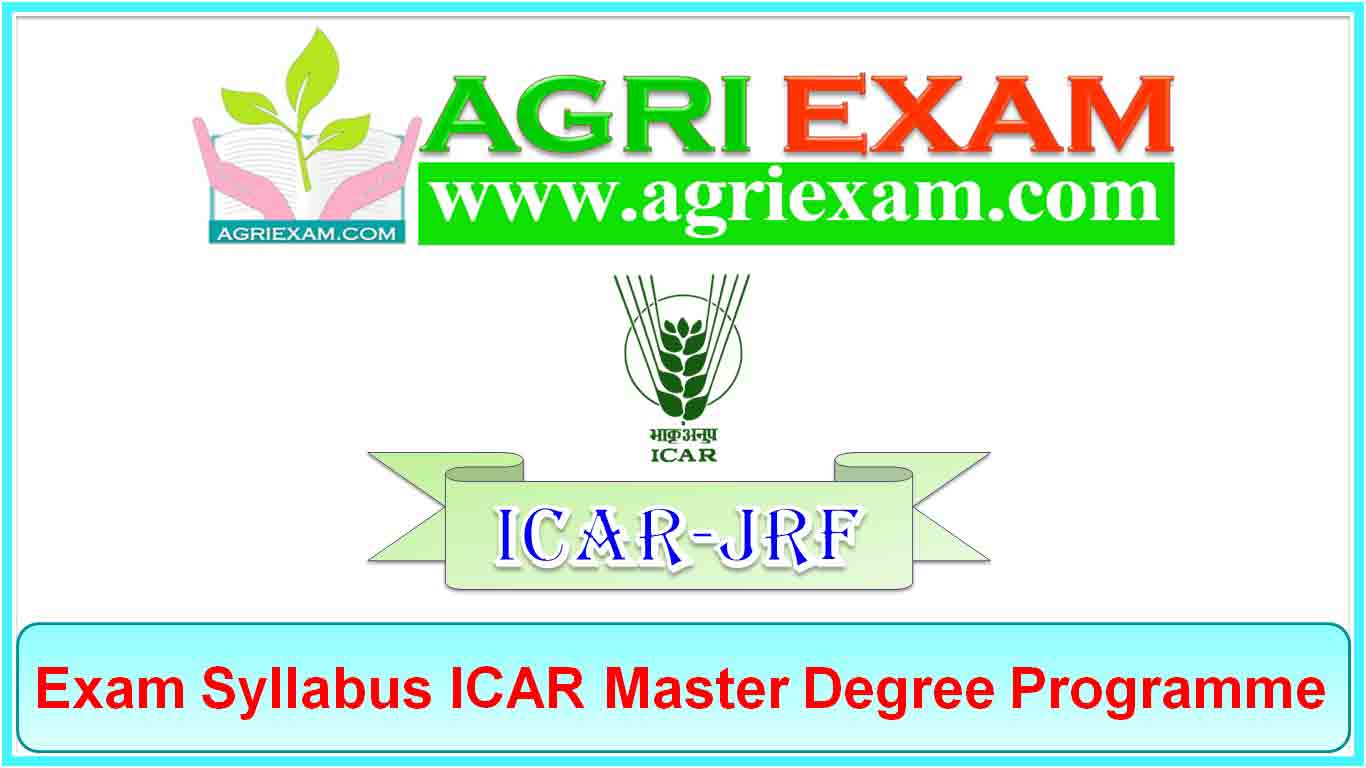MAJOR SUBJECT GROUP – STATISTICAL SCIENCES

ICAR JRF Syllabus STATISTICAL SCIENCES
Sub-Subjects:
7.1: Agricultural Statistics,
7.2: Computer Application,
7.3: Bioinformatics
UNIT-I: Agriculture: Importance of Agriculture/Forestry/Livestock in national economy. Basic principles of crop production. Major diseases and pests of crops. Elementary principles of economics and agri-extension. Important rural development programmes in India. Organizational set up of Agricultural research, education and extension in India.
UNIT-II: Mathematics: Real and complex numbers; polynomial and roots; de Moivre’s theorem and its applications. Elements of set theory- De Morgan’s laws; vector space, linear independence, orthogonality; matrices- addition and multiplication, rank of a matrix, determinants, inverse of a matrix, solution of a system of linear equations, characteristic roots and vectors; convergence of infinite sequences and infinite series- tests for convergence, absolute convergence; co-ordinate geometry in two dimensions – line, circle, parabola, ellipse and hyperbola.
Differential calculus: limits, differentiation of function of a single variable; Taylor’s and Maclaurin’s theorems, mean-value theorem; maxima and minima; indeterminate form; curvature, asymptotes, tracing of curves, function of two or more independent variables, partial differentiation, homogeneous functions and Euler’s theorem, composite functions, total derivatives, derivative of an implicit function, change of variables, Jacobians. Integral calculus: integration by simple methods, standard forms, simple definite integrals, double integrals, change of order of integration, Gamma and Beta functions, application of double integrals to find area. Ordinary differential equations: differential equations of first order, Exact and Bernoulli’s differential equations, equations reducible to exact form by integrating factors, equations of first order and higher degree, Clairaut’s equation, methods of finding complementary functions and particular integrals.
Calculus of finite differences, interpolation; numerical differentiation and integration, difference equations; solution of simple non-linear equations by numerical methods like Newton- Raphson method.
UNIT-III: Introduction: Statistics – definition, use and limitations; Frequency Distribution and Curves; Measures of Central Tendency: Arithmetic mean; Geometric mean, Harmonic mean, Median, Mode; Measures of Dispersion: Range, Mean deviation, Quartile deviation, Variance and Coefficient of Variation; Probability: Definition and concepts, law of addition and multiplication, conditional probability, Bayes’ theorem; Binomial, multinomial, Poisson and normal distribution; Introduction to Sampling: Random Sampling; Standard Error; Tests of Significance – Types of Errors, Null Hypothesis, Level of Significance, Testing of hypothesis; Large Sample Test- SND test for Means, Single Sample and Two Samples; Student’s t-test for Single Sample, Two Samples and Paired t test. F test; Chi-Square Test for goodness of fit and independence of attributes; Correlation and Regression and associated tests of significance. Experimental Designs: basic principles, Analysis of variance, Completely Randomized Design (CRD), Randomized Block Design (RBD).
UNIT-IV: Computers: input, output devices, memory, hardware, software; Classification, booting computer. Viruses, worms and antivirus. Operating System- some DOS commands, FORMAT, DIR, COPY, PATH, MD, CD and DELTREE. Types of files. WINDOWS: Desktop and its elements, WINDOWS Explorer, working with files and folders; setting time and date. Anatomy of WINDOWS. Applications – MS WORD: Word processing features- Creating, Editing, Formatting and Saving; MS EXCEL: Electronic spreadsheets, concept, packages. Creating, editing and saving a spreadsheet. In-built statistical and other functions. Excel data analysis tools, Correlation and regression, t-test for two-samples and ANOVA with one-way classification. Creating graphs. MS Power Point and its features. MS ACCESS: Concept of Database, creating database; Computer programming: Flow charts and Algorithms, Programming languages- BASIC, FORTRAN and C. Internet: World Wide Web (WWW), Concepts, web browsing and electronic mail. Bioinformatics – NCBI Gene bank sequence database- primary and secondary database.
ICAR JRF Syllabus STATISTICAL SCIENCES
I want old exam papers for my better preparation